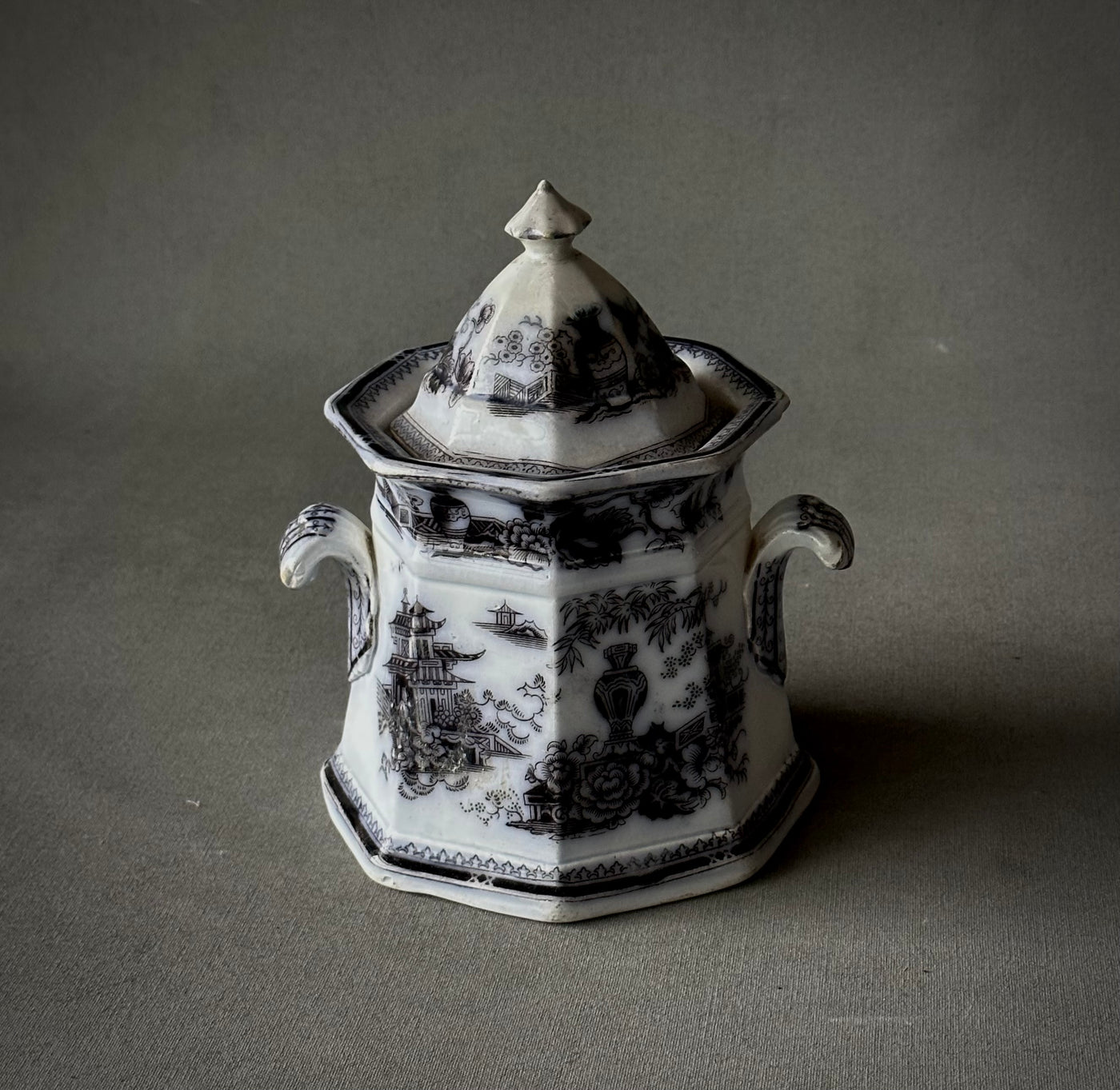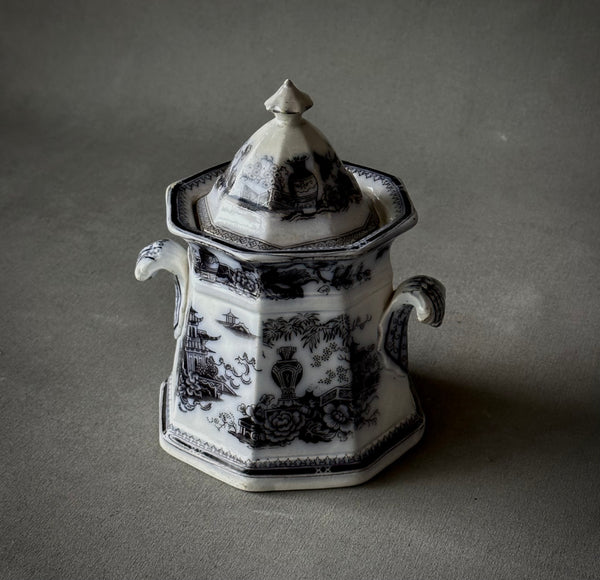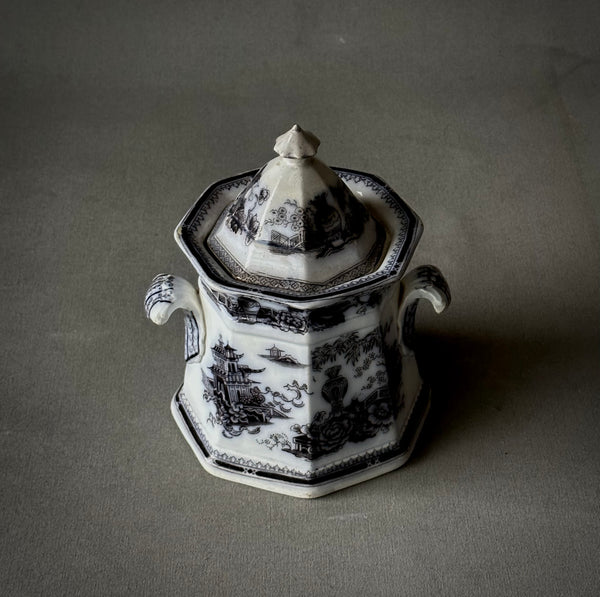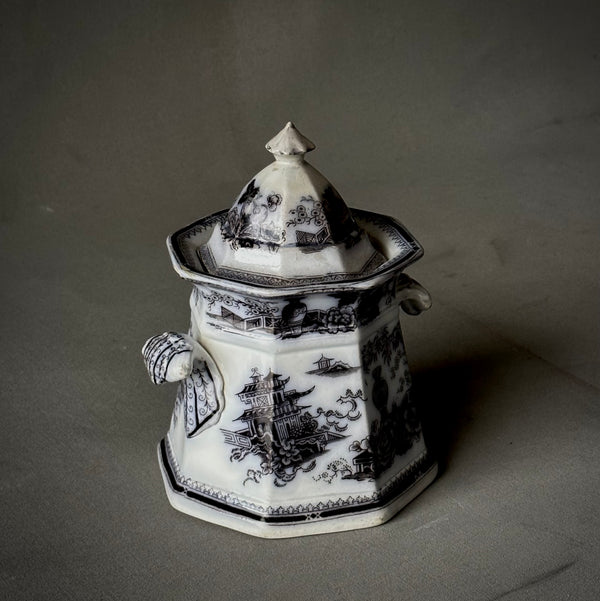



A small Victorian transfer-ware pot with black ink and beveled lid. The Chinoiserie motif depicts a cascade of temples, urns, and flowers. Would serve equally well for both practical and decorative use.
Produced by the Staffordshire pottery W. Adams and Sons, the piece is a fine example of ironstone china, a type of china invented in Staffordshire in the mid-19th century as an alternative to the pricier and more fragile porcelain. In fact there is no iron in ironstone china; its name comes from sharing properties of strength, durability, and economy. Most often it was used to produce ornamental objects of considerable size, and was also the go-to chinaware for hotel services.
England, circa 1860
Dimensions: 6.5W x 6D x 7H
